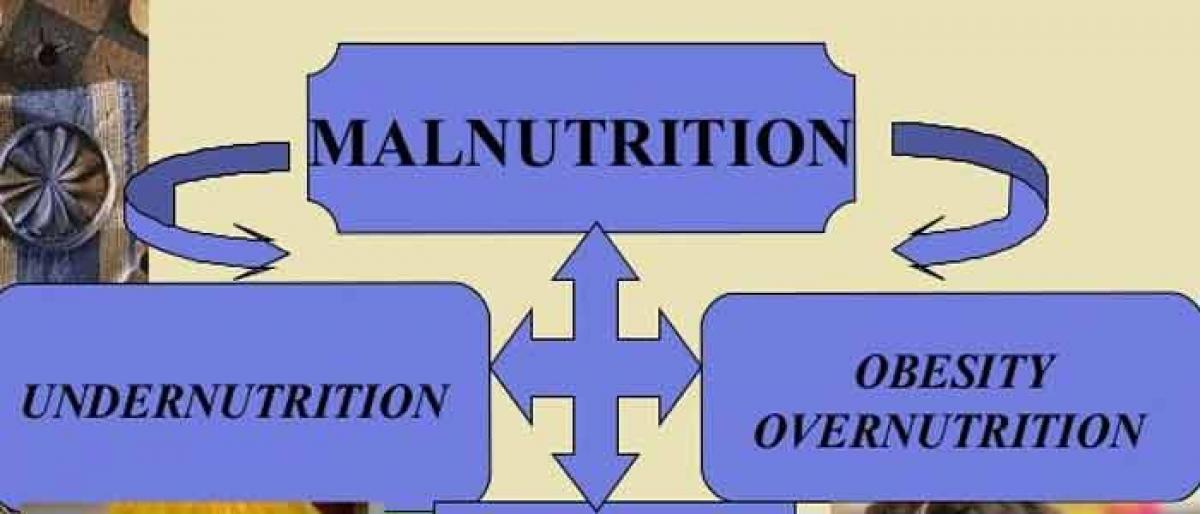Live
- UP govt prepares question banks for students
- Educating youth about importance of maintaining a healthy liver
- Nine candidates enter the poll fray on first day
- IIT-K, BFI forge partnership to accelerate healthcare innovation
- Nurture self-confidence and growth
- Nominations filed for Kurnool & Nandyal constituencies
- YSRCP’s ‘poor’ candidate owns assets of Rs 161 crore
- 12 nominations filed on Day-1
- Infy profit zooms 30% to ₹ 7,969cr in Q4
- Only 9.83 pc candidates are women in NE states
Just In

Malnutrition refers to the situation where there is an unbalanced diet in which some nutrients are in excess, lacking or wrong proportion. Simply put, we can categorise it to be under-nutrition and over-nutrition.
Malnutrition refers to the situation where there is an unbalanced diet in which some nutrients are in excess, lacking or wrong proportion. Simply put, we can categorise it to be under-nutrition and over-nutrition. Despite India's 50% increase in GDP since 1991, more than one third of the world's malnourished children live in India. The World Bank estimates that India is one of the highest ranking countries in the world for the number of children suffering from malnutrition.
The prevalence of underweight children in India is among the highest in the world, and is nearly double that of Sub Saharan Africa with dire consequences for mobility, mortality, productivity and economic growth. The 2017 Global Hunger Index (GHI) Report ranked India 97th out of 118 countries with a serious hunger situation.
Though most of the population is still living below the National Poverty Line, its economic growth indicates new opportunities and a movement towards increase in the prevalence of chronic diseases which is observed in at high rates in developed countries such as United States, Canada and Australia. The combination of people living in poverty and the recent economic growth of India has led to the co-emergence of two types of malnutrition: undernutrition and overnutrition, according to Wikipedia.
The term malnutrition is multifaceted. It encompasses both overnutrition, associated with overweight and obesity, and undernutrition, referring to multiple conditions including acute and chronic malnutrition and micronutrient deficiencies.
Chronic malnutrition results from insufficient intake or absorption of essential nutrients over a protracted period. Stunting (short stature for age), the most commonly used indicator of chronic malnutrition, is associated with developmental impairments and reduced economic potential later in life (Black and others 2008; Grantham-McGregor and others 2007).
Micronutrient deficiencies are a form of chronic malnutrition that can have marked impacts on health, development, and productivity over the lifespan. Because visible signs are not always present, micronutrient deficiencies are often referred to as hidden hunger (see Das and others [2015]
Some of the major causes for malnutrition in India are economic inequality. Due to the low social status of some population groups, their diet often lacks in both quality and quantity. Women who suffer malnutrition are less likely to have healthy babies.

© 2024 Hyderabad Media House Limited/The Hans India. All rights reserved. Powered by hocalwire.com







